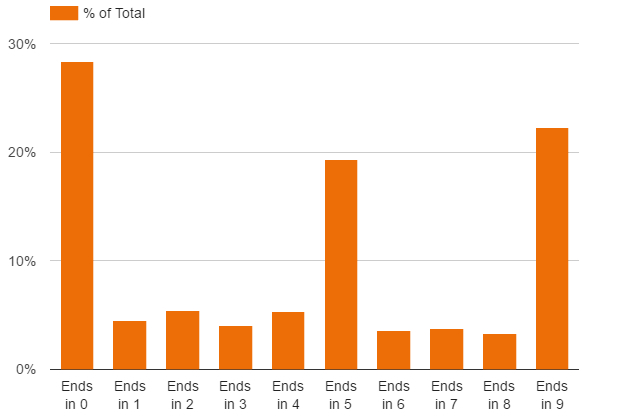
Trends

It’s a pricing tale the world over: ending a price with the number “9” makes it appear smaller than it really is. But how many prices actually use this strategy? Is it a bygone cliche or still alive and well? Here’s what we found.
The Goods
To find our answer we looked at over 75,000 marketing messages distributed across four channels; email, Facebook, Twitter, and Instagram. We then separated out all the messages that included a dollar value and removed any that referenced discounts (“save”, “off”, etc.) to just have prices in our sample. Finally, we grouped the results by the last digit of each price before the decimal (if included) and found what percentage of all prices each ending represented.
For our sample, the most common ending was “0” which made up 28% of all prices we found. The next most common was “9” at 22% followed by “5” at 19%. The rest hovered around 3-5% each.
What This Means
A quick straw poll in the office suggested that we expected the number of “9” endings to be significantly higher (closer to 50-75%), so knowing that just just under 1/4 of prices applied this theory was a bit surprising.
But as you know we hate to just leave a number out there like this without something actionable, so next week we’re going to share what we found when we looked at engagement (open rates, like rates, etc.) for each group. Does “$__9” get more people to click? Stay tuned.
Next Week, $__9 Performance
Don’t want to miss next week’s post? Stick your email below and we’ll send you a quick email alert when it’s published.